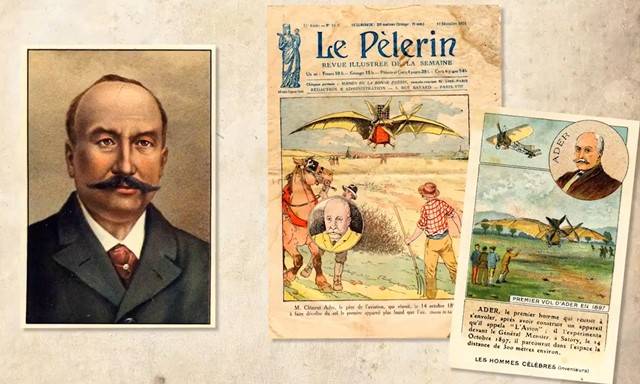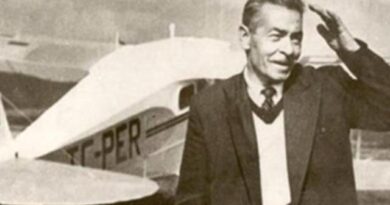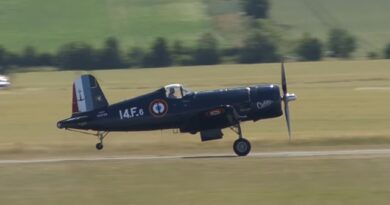Clement Ader – Pioneering French Inventor
If you were asked “who invented the first functional aircraft?” what would your answer be? It would probably be the Wright brothers. Although your answer wouldn’t be wrong there is more to it than that. We have many inventors in the history of aviation who don’t get enough recognition and eventually become forgotten. One of these creative inventors who came up with great inventions that propelled aviation industry forward was Clement Ader. Along with constructing a gas balloon, he also invented two flying machines with bat shaped wings that were marvellous and innovative.
Clement Ader was a self taught engineer and a brilliant inventor from France. His first flying machine Ader Eole managed to rise 20 cm (8 in.) from the ground for 50 meters (160 ft.). This feat is considered the first short uncontrolled powered flight by aviation historians. Just like numerous inventors that came before him who were deeply interested in aviation, he devoted his life to this beautiful passion and played an important role in laying the groundwork for many more innovations to come.
Ader first built his career around communication devices and made important innovation in that field in the beginning. Afterwards he focused his attention towards flight and he built his first aircraft model in 8 years. He was a notable pioneer in aviation industry and is definitely a noteworthy name to remember. So let’s dive right in and learn more about this distinguished inventor.
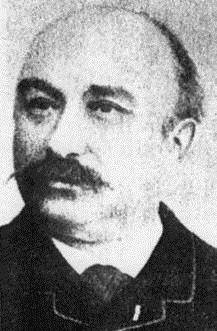
source: wikipedia
Life And Career Of Clement Ader
Clement Ader was born on the 2nd of April, 1841 in Muret in southwestern France. His interest in inventions and machines became in his early childhood. As a kid, he designed a large kite that was able to lift people off the ground. Clement was a very imaginative child with a knack for building useful and ingenious tools. In his youth he also build a basic velocipede, which is an archaic form of bicycle that was popular during the 19th century.
During the Franco-Prussian War that took place from 1870 to 1871, Clement Ader built a balloon, which he donated to the city of Toulouse when the war finally ended. Deciding to follow his passion and to earn a real fortune, Ader quit his job in 1876 at the Ministry of Bridges and Roads to begin building his reputation as an inventor. He moved to Paris to start his engineering career.
After studying electrical engineering, his earlier work was focused on the telephone and communication devices. In 1878 he came up with new improvements for Alexander Graham Bell’s invention. In 1880, Ader set up the the first private telephone network in Paris, which eventually helped him raise enough capital to pursue his dreams in building aircraft.
Ader spent a long time studying birds and their anatomy both where he lived and abroad. He went to Africa to study local birds firsthand. Afterwards he went to Algeria and dressed as a local, then he went into the desert with his two guides to see vultures and study their anatomy up close. He also used the work of French artist and innovator Louis Pierre Mouillard on the flight of birds. With most of the theoretical work done, Ader was finally ready to focus on building a functional aircraft that could fly successfully.
In 1886, after long years of hard work and intense study, Clement Ader finally built his first flying machine. The aircraft’s wingspan was 14 meters (46 ft.) and the total weight was 300 kg. (660 pounds). The engine which weighed 51 kg. (112 pounds) was steam powered and also an invention of Ader. The flying machine had 4 cylinders with a power rating of 20 hp (15 kW). Aircraft’s wings looked like a bat’s wings and had a pretty unique design.
The machine was named Ader Eole, after its inventor and the Greek mythical creature associated with the wind. On the 11th of August 1890 Ader obtained the patent for his invention and six weeks after that he attempted to take it to the skies. On the 9th of October 1890 Ader Eole managed to fly 20 centimeters (8 inches) off the ground for about 50 meters (160 ft.). The stunt is considered the first powered take off and uncontrolled flight by aviation historians.
Following this success, Clement Ader quickly started working to build Avion II, his second aircraft that is also known as Zephyr or Ader Eole II. However, the construction of this machine was never finalized and Ader later left this project to build another aircraft named Avion III.
Charles de Freycinet, the French minister of war of the time was interested in the work of Clement Ader. Believing that Ader’s work was promising, he wanted to assist the ingenious inventor’s project. During the development of Avion III, Ader received help and support from the French War Office and built it in 1897, after 5 years of work.
Avion III looked like a huge bat, its design was influenced by its predecessor. The aircraft had a 16 meter (52 ft.) wingspan and its empty weight was 400 kg. (882 pounds). It had 4-bladed sail type propellers and was equipped with 2 steam engines built by Ader himself with a power rating of 30 hp (22 kW). Unfortunately, the flight attempt ended in failure and funding was withdrawn. Today the machine is held at the Musée des Arts et Métiers in Paris after going through restoration in 1980s.
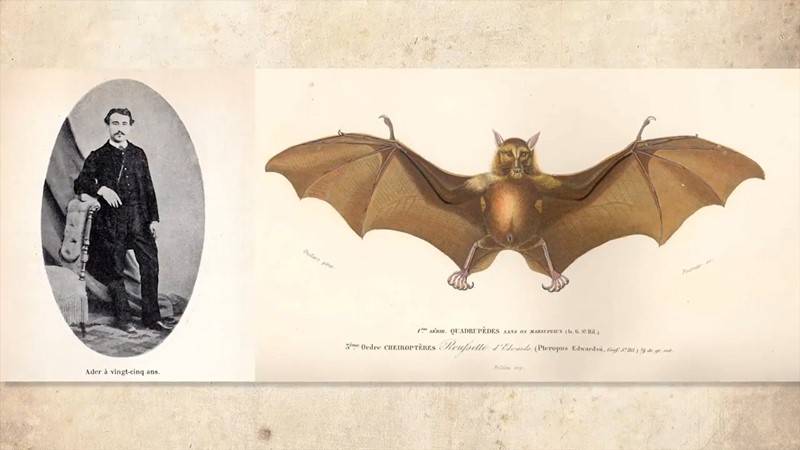
Legacy And The Impact Of Clement Ader
Although his attempt at flying Avion III was a failure, Ader didn’t stop supporting the development of aviation technology. He built a V8 engine for the Paris–Madrid race in 1903 and published his book “Military Aviation” in 1909.
Today he is known for his important work in the engineering field and his many inventions in cycling, communications and aviation. Clement is considered “the father of aviation” and his efforts are still respected in the aviation world. He is one of the most admirable people from the earlier days of flight and we must always remember his pioneering work in this field.
Resources
Anon. (n.d.), Clément Ader, Wikipedia, Retrieved 6 May 2021
< https://en.wikipedia.org/wiki/Cl%C3%A9ment_Ader >
Tom D. Crouch (n.d.), Clément Ader, Brittanica, Retrieved 6 May 2021
< https://www.britannica.com/biography/Clement-Ader >
History Today Online Editor (December 29, 2020), Clément Ader Biography, History Today Online, Retrieved 6 May 2021
< https://historytodayonline.blogspot.com/2020/12/clement-ader-biography.html >
For more aviators click.
